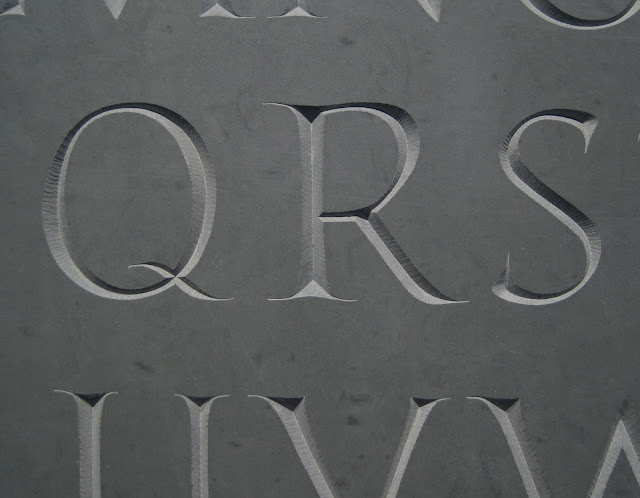Hand carving stone is an exacting craft. Letters for me are sculptures. In the Roman Alphabet there happen to be 26 of them to choose from - and from the time of the Romans and before, people have been experimenting, manipulating, and looking for new ways to use these forms.
At their most basic, letters are just lines and strokes. Sometimes very purposeful, other times they almost seem like a happy accident. It is the combination of this "purpose" and immediacy that keeps letters interesting. For me this sculpture is about those forms and strokes that are used to create letters. I find these forms in themselves - the building blocks of letters - endlessly fascinating.
The happy accident and the meticulous and disciplined line, they are both part of the composition.
The line I drew yesterday - is not the line I draw today.
I knew the basic design I wanted for this piece - but the details of the planes overlapping - and how each form would merge with the edge of the stone - those were all worked out during the carving. I wanted the carving to highlight those boundaries between planes - and give you the feeling that while these forms may all "belong" together - there is a spontaneity to their organization and a living playfulness in their crush.
Adam Paul Heller, August 2012
*Commission by Linda Groenendyk, Art collector & Philanthropist
 | ||
| Carving a place for the design. |
 |
| Honing the surface with a wet stone. |
 |
| The stone with the drawing transferred - ready to carve. |
 |
| Carving... |
 |
| Detail of the design coming to life. |
 |
| ~ |
 |
| The finished carving after honing the raised forms. |
 | |||
| Detail, before painting. |
 |
| After painting ~ detail. |
 |
| ~ |
 | |||
| Detail of forms meeting the natural cleft surface of the stone. |
 |
| The finished stone. |










































